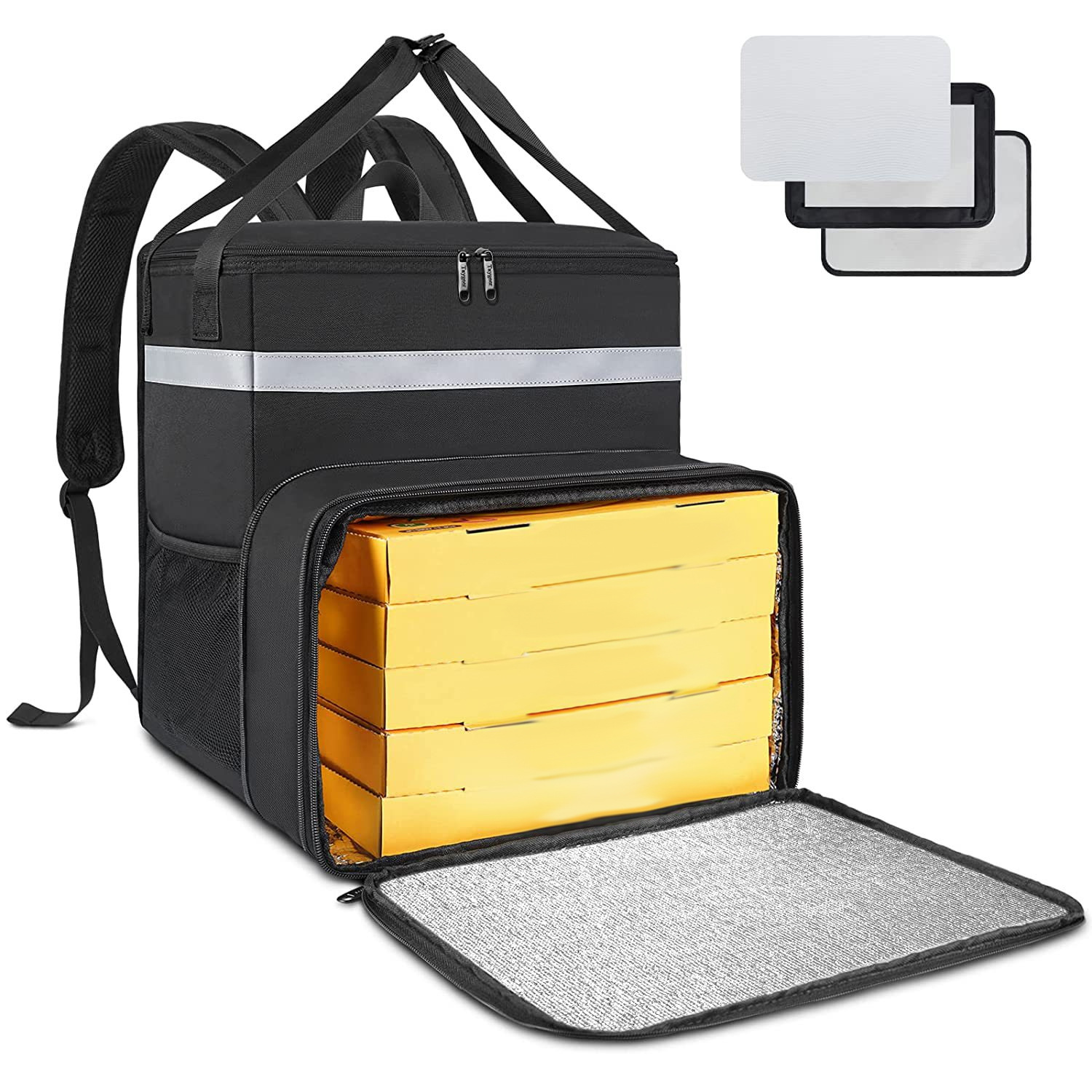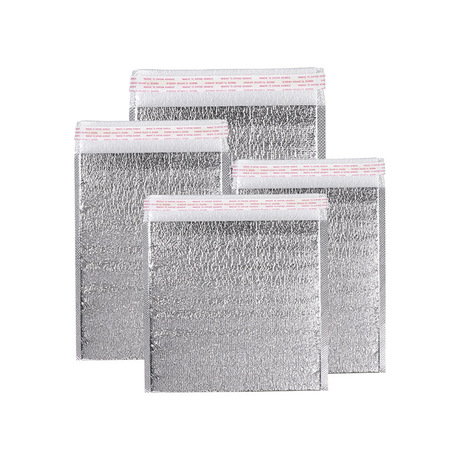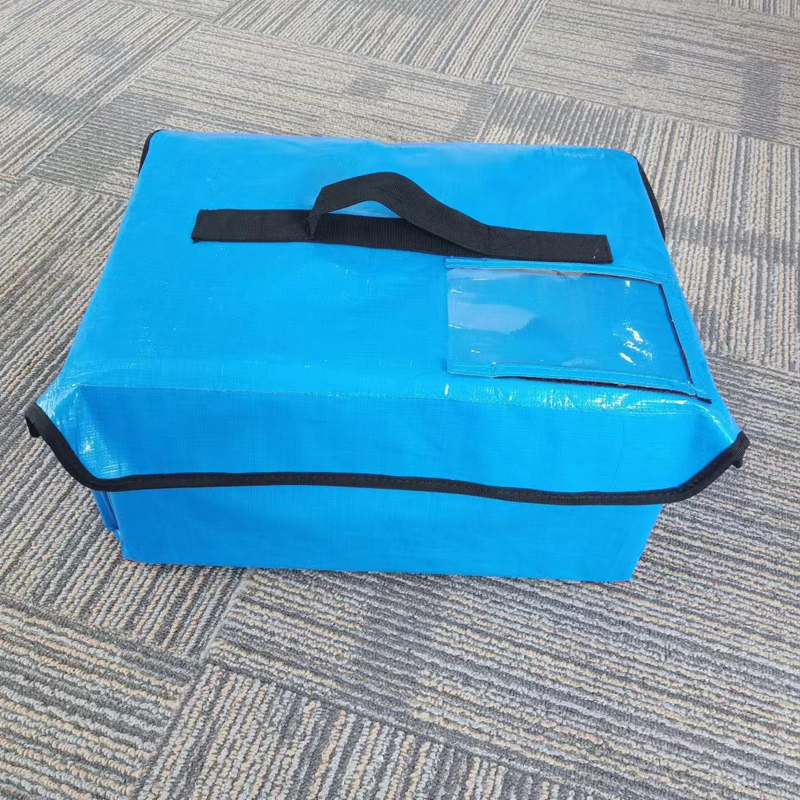1. How to package perishable foods
1. Determine the type of perishable foods
Primeiro, the type of perishable food to be shipped needs to be identified. Food can be divided into three categories: non-refrigerated, refrigerated and frozen, each type requiring different processing and packaging methods. Non-refrigerated foods usually require only basic protection, while refrigerated and frozen foods require more stringent temperature control and packaging treatment.
2. Use the proper packaging
2.1 Heat insulation vessel
In order to maintain the appropriate temperature of perishable food, the use of heat insulation transport box is the key. These heat insulation containers can be foam plastic boxes or boxes with heat insulation lining, which can effectively isolate the external temperature and keep the temperature inside the box stable.
2.2 Refrigerante
Choose the appropriate coolant according to the refrigeration or freezing requirements of the food product. For refrigerated foods, gel packs can be used, which can maintain lower temperatures without freezing the food. For frozen foods, then dry ice is used to keep them cold. No entanto, it should be noted that dry ice should not be in direct contact with food, and relevant hazardous materials regulations should be observed when used to ensure safe transportation.
2.3 Waterproof inner lining
To prevent leaks, especially when transporting seafood and other liquid foods, use waterproof plastic bags to wrap the food. This not only prevents liquid leakage, but also further protects the food from external contamination.
2.4 Filling material
Use bubble film, foam plastic or other buffer materials in the packaging box to fill the gaps to ensure that the food is not damaged by movement during transportation. These buffer materials effectively absorb the vibration, providing additional protection and ensuring that the food remains intact when arriving at its destination.
2. Specific packaging techniques for perishable foods
1. Refrigerated food
For refrigerated foods, use insulated containers such as caixas de espuma and add gel packs to keep them low. Put the food into a waterproof plastic bag and then into a container to prevent leakage and contamination. Finalmente, the void is filled with a bubble film or plastic foam to prevent food movement during transport.
2. Alimentos congelados
Frozen foods use dry ice to maintain extremely low temperatures. Place food in a waterproof bag to ensure that dry ice does not in direct contact with food and comply with hazardous material
regulations. Use a heat insulated container and fill with buffering material to ensure that the food is not damaged in transport.
3. Non-refrigerated food products
For non-refrigerated foods, use a strong packaging box with a waterproof lining inside. According to the characteristics of food, foam film or foam plastic is added to provide additional protection against damage due to transport vibration. Ensure well sealed to prevent external contamination.
3. Precautions in the transportation of perishable food
1. Controle de temperatura
Maintaining the right temperature is the key to ensure the quality of perishable food. Refrigated food should be kept at 0°C to 4°C, and frozen food should be kept below-18°C. Durante o transporte, use suitable coolant such as gel packs or dry ice and ensure the insulation of the container.
2. Packaging integrity
Ensure the integrity of the packaging and avoid food exposure to the external environment. Use waterproof plastic bags and sealed containers to prevent leakage and contamination. The package shall be filled with sufficient buffer materials such as bubble film or foam to prevent
food movement and damage during transportation.
3. Compliance transportation
Comply with relevant regulations, especially when using dangerous materials such as dry ice, and comply with transportation regulations to ensure safety. Before transportation, understand and comply with the food transportation regulations of the destination country or region to avoid delay or food damage caused by regulatory problems.
4. Real-time monitoring
Durante o transporte, the temperature monitoring equipment is used to monitor the ambient temperature in real time. Once an abnormal temperature is found, take timely measures to adjust it to ensure that the food is always within the appropriate temperature range.
5. Rapid transportation
Choose quick transportation routes to minimize transportation time. Give priority to choosing reliable logistics service providers to ensure that food can be delivered quickly and safely to the destination, and maximize the freshness and quality of food.
4. Huizhou’s professional services in perishable food transportation
How to transport the perishable food items
Maintaining food temperature and freshness is essential when transporting perishable food. Huizhou Industrial Cold Chain Technology Co., Ltda. offers a range of efficient cold chain transportation products to help ensure that perishable food is kept in the best condition during transportation. Here are our professional solutions.
1. Huizhou products and their application scenarios
1.1 Types of refrigerant
–Water injection ice bag:
-Main application temperature: 0℃
-Cenário aplicável: For perishable foods that need to be kept at around 0℃, such as some vegetables and fruits.
-Salt water ice bag:
-Main application temperature range: -30℃ to 0℃
-Cenários aplicáveis: For perishable foods that require lower temperatures but not extreme low temperatures, such as refrigerated meat and seafood.
-Gel Ice Bag:
-Main application temperature range: 0℃ to 15℃
-Cenário aplicável: For perishable foods, such as cooked salad and dairy products.
-Materiais de mudança de fase orgânica:
-Main application temperature range: -20℃ a 20 ℃
-Cenário aplicável: suitable for accurate temperature control transportation of different temperature ranges, such as the need to maintain room temperature or refrigerated high-end food.
-Placa de gelo da caixa de gelo:
-Main application temperature range: -30℃ to 0℃
-Cenário aplicável: perishable food for short distance transportation and need to maintain low temperatures.
1.2, incubator, tipo
-O isolamento VIP pode:
-Características: Use a tecnologia de placa de isolamento a vácuo para fornecer o melhor efeito de isolamento.
-Cenário aplicável: Suitable for the transportation of high-value foods to ensure stability at extreme temperatures.
-EPS insulation can:
-Características: Polystyrene materials, baixo custo, suitable for general thermal insulation needs and short-distance transportation.
-Cenário aplicável: suitable for food transportation requiring moderate insulation effect.
-EPP insulation can:
-Características: high density foam material, provide good insulation performance and durability.
-Cenário aplicável: Suitable for food transportation that requires long time insulation.
-PU insulation can:
-Características: Material de poliuretano, excellent thermal insulation effect, Adequado para transporte de longa distância e altos requisitos de ambiente de isolamento térmico.
-Cenário aplicável: suitable for long-distance and high-value food transportation.
1.3 Types of Saco de isolamento térmico
-Oxford cloth insulation bag:
-Características: light and durable, Adequado para transporte de curta distância.
-Cenário aplicável: suitable for the transportation of small batch food, fácil de carregar.
-Non-woven fabric insulation bag:
-Características: materiais ecológicos, good air permeability.
-Cenário aplicável: suitable for short distance transportation for general insulation requirements.
-Aluminum foil insulation bag:
-Características: calor refletido, bom efeito de isolamento térmico.
-Cenário aplicável: suitable for short and medium distance transportation and food that need heat preservation and moisture preservation.
2. According to the recommended type of perishable food program
2.1 Fruits and vegetables
-Solução recomendada: Use a water-filled ice pack or gel ice bag, paired with an EPS incubator or an Oxford cloth insulation bag, to ensure that the temperature is maintained between 0℃ and 10℃ to keep the food fresh and moist.
2.2 Refrigerated meat and seafood
-Solução recomendada: Use a saline ice pack or ice box ice plate, paired with a PU incubator or EPP incubator, to ensure that the temperature is maintained between-30℃ and 0℃ to prevent food deterioration and bacterial growth.
2.3 Cooked food and dairy products
-Solução recomendada: Use a gel ice bag with an EPP incubator or aluminum foil insulation bag to ensure that the temperature is maintained between 0℃ and 15℃ to maintain the taste and freshness of the food.
2.4 High-end food (such as high-grade desserts and special fillings)
-Solução recomendada: Use organic phase change materials with VIP incubator to ensure that the temperature is maintained between-20℃ and 20℃, and adjust the temperature according to the specific requirements to maintain the quality and taste of the food.
Usando produtos de refrigerante e isolamento de Huizhou, you can ensure that perishable foods maintain the best temperature and quality during transportation. We are committed to providing our customers with the most professional and efficient cold chain transportation solutions to meet the transportation needs of different types of perishable food.
5.Serviço de monitoramento de temperatura
Se você deseja obter as informações de temperatura do seu produto durante o transporte em tempo real, Huizhou fornecerá um serviço profissional de monitoramento de temperatura, Mas isso trará o custo correspondente.
6. Nosso compromisso com o desenvolvimento sustentável
1. Materiais adequados para o meio ambiente
Nossa empresa está comprometida com a sustentabilidade e usa materiais ecológicos em soluções de embalagem:
-Recipientes de isolamento recicláveis: Nossos recipientes de EPS e EPP são feitos de materiais recicláveis para reduzir o impacto ambiental.
-Refrigerante biodegradável e meio térmico: We provide biodegradable gel ice bags and phase change materials, Seguro e ecológico, to reduce waste.
2. Soluções reutilizáveis
Promovemos o uso de soluções de embalagem reutilizáveis para reduzir o desperdício e reduzir custos:
-Recipientes de isolamento reutilizáveis: Nossos contêineres EPP e VIP são projetados para uso múltiplo, fornecendo economia de custos a longo prazo e benefícios ambientais.
-Refrigerante reutilizável: Our gel ice packs and phase change materials can be used multiple times, reducing the need for disposable materials.
3. Prática sustentável
Aderimos a práticas sustentáveis em nossas operações:
-Eficiência energética: Implementamos práticas de eficiência energética durante os processos de fabricação para reduzir a pegada de carbono.
-Reduzir o desperdício: Nós nos esforçamos para minimizar o desperdício por meio de processos de produção eficientes e programas de reciclagem.
-Iniciativa verde: Estamos ativamente envolvidos em iniciativas verdes e apoiam os esforços de proteção ambiental.



































